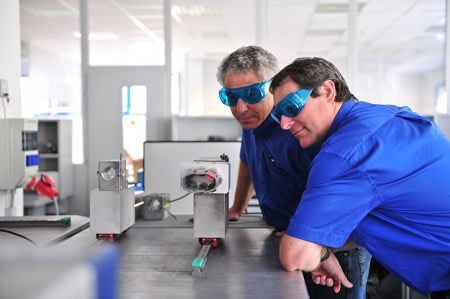For all ultrasonic processes it is important that the Sonotrode, the fixture and the component to be welded form a unit and are not separated during the tool replacement process. All parts are installed in a complete replacement frame and form a firmly setup "tool cube" which can be exchanged and stored problem-free, if a different part needs to be welded. During the startup phase operation is performed with one machine; with increasing numbers of variants the operator is only required to purchase additional tool change kits. In this way the number of cost-intensive components, such as ultrasonic generators, controls, and safety management (all parts of the basic machine) can be reduced to a minimum.

In ultrasonic welding, electrical voltage is converted in an ultrasonic generator; first to a voltage in ultrasonic frequency between 20 and 35 kHz and subsequently to mechanical vibration. This mechanical vibration is introduced into the component through a weld tool, referred to as Sonotrode. At 20 kHz the Sonotrode performs as many as 20,000 vibration movements per second. This generates heat and melts the part in the joining zone. After a hold time under pressure, the part forms a non-positive joint. Ultrasonics can be operated immediately without heat-up times; the cycle times are much shorter and energy consumption significantly lower than with mirror-imaged welding.



